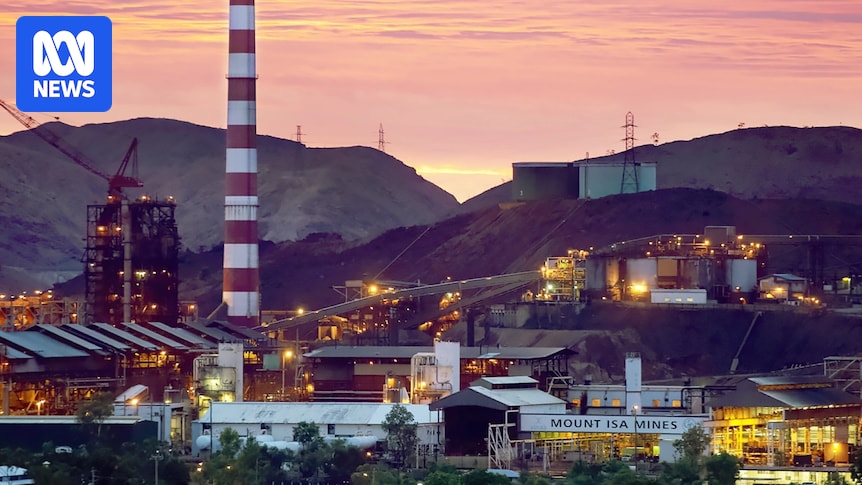Australian taxpayers will fund a multi-million-dollar rescue package for mining giant Glencore to keep copper processing facilities operational in Queensland until the end of 2028.
Glencore has accepted $600 million in financial bridging support for its Mount Isa Copper Smelter, and adjoining Townsville Refinery, from the state and federal governments.
The Swiss multinational warned the copper assets would transition into care and maintenance mode without government support to rebrick the smelter infrastructure, triggering nearly five-month-long negotiations.
50 per cent cost share
Federal Minister for Industry and Innovation Tim Ayres confirmed the package was a 50 per cent cost share between the Commonwealth and state governments.
“The package has a two-year component which is two lots of $200 million, and the third year will be delivered contingent on all of the parties to this arrangement complying with their obligations,” Mr Ayres said.
Glencore Metals Australia interim chief operating officer Troy Wilson said the agreement provided a short-term lifeline for the copper smelter and refinery.
“[It] comes after Glencore had already stepped up to absorb significant financial losses to maintain operations and jobs while working on a solution with government,” Mr Wilson said.
“On behalf of Glencore and our workers, I would like to express thanks to the Australian and Queensland governments for backing the region and these strategic assets with a critical support package.”
Robbie Katter says the package “is a start”. (Supplied: Katter’s Australian Party)
Katter says ‘more needed’
State Member for Traeger Robbie Katter said the funding was good news, but there was still work to be done.
“Let’s be clear, we’re only at half time. There’s no champagne and celebrations at half time, just a rev up from the coach to go out and finish the job in the premiership half,” Mr Katter said.
“The federal government in particular have recognised the strategic importance of keeping the smelter operating, and we need them to remain at the negotiating table to reform the smelter operations, not just continually save it and leaving it in the hands of the one owner.”
Molten copper being poured into an anode at the Mount Isa Mines Copper Smelter. (Supplied: Glencore)
Region relieved
The Mount Isa smelter processes Glencore and third-party copper-concentrate, which is transported by rail and exported through the Townsville port via the Townsville refinery.
The Townsville refinery processes up to 300,000 tonnes of pure copper cathode each year — a raw material used for copper wire and cabling.
The Mount Isa Copper Smelter requires rebricking every four years, with 60,000 refractory bricks replaced, which was due in 2026.
The last multi-million-dollar rebrick was completed in 2022, and in 2016, the then Labor state government invested $15 million, out of the $30 million required, to rebrick the infrastructure.
Glencore said it directly employed about 600 workers across the Townsville refinery and Mount Isa smelter.
But peak-economy lobby group Townsville Enterprise (TEL), said the company was tied to thousands more jobs indirectly.
The outback mining town of Mount Isa is more than 1,800 kilometres north west of Brisbane. (ABC North West Qld: Meghan Dansie)
“There are about 17,000 jobs at risk if these operations were to cease,” TEL Chair Kevin Gill said.
“The by-product from the smelter — sulphuric acid — is transported to the Phosphate Hill fertiliser plant, which is sent on the railway from Mount Isa to the Port of Townsville and shipped out of the port.”
He said the Mount Isa smelter was the only facility in Australia that could process third-party copper-concentrate.
“There is a lot of copper that second and third-tier miners are keen to mine, and they do rely on this smelter as well as the refinery and port.”
Copper costs
In its bid for government support, Glencore said its smelter and refinery were strategically important assets for Australia, but were uneconomic for the company.
It said refining charges had dropped dramatically as China and Indonesia built their smelting capacity.
Glencore said energy costs in Queensland’s north-west were double or more than those in India, China, Canada and the United States.
About 60,000 of the smelter’s bricks were replaced over six weeks in 2022. (Supplied: Mount Isa Mines)
The Australian Strategic Policy Institute’s (ASPI) Northern Australia lead Dr John Coyne said government support for Glencore should be a hand-up, rather than a handout.
“At the end of the day, the long-term predictions for copper are great, demand will increase,” Dr Coyne said.
“Competition in the market is being distorted, with smelters in China being given cheap loans and access to inexpensive power.
“Finally, if we don’t protect at least some of our industry, we will lack the ability to support ourselves, in terms of national resilience.”

